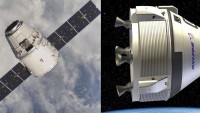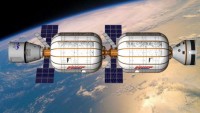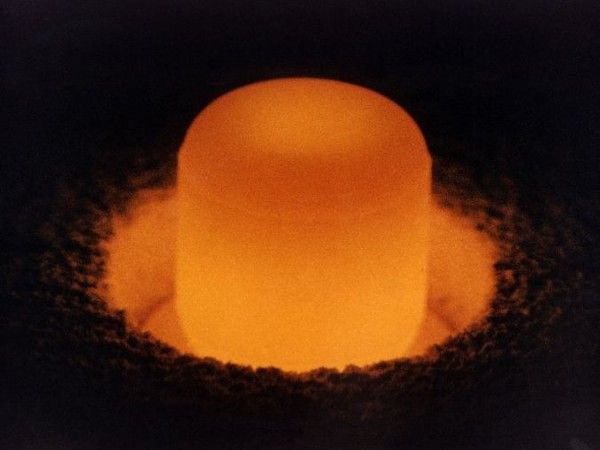NASA Averts Shutdown of Deep Space Missions with New Production of Pu-238
| Arthur Dominic Villasanta | | May 16, 2016 05:18 AM EDT |
(Photo : NASA) Plutonium-238 pellet
New production of the vital and specialized radioisotope fuel called Plutonium-238 (Pu-238) that powers all of the United States' deep space probes ensures the continuation of NASA's ambitious solar system exploration in this decade and beyond.
Without the little known Pu-238, the first American astronauts on the Moon wouldn't have been able to power their experiments and the New Horizons spacecraft wouldn't have survived 10 years in space to give us those breathtaking photos of Pluto last year.
Like Us on Facebook
All NASA deep space probes from Voyager 1 in 1977 to the Curiosity Mars Rover in 2011 have used Pu-238 as their primary power source.
Despite its irreplaceable role as the only power source for deep space NASA missions, supplies of Pu-238 were allowed to reach a level so low existing supplies were estimated to be enough to only power three batteries. This led the U.S. Department of Energy to begin a frantic search for a quick solution. It found it in December 2015.
The DOE's Oak Ridge National Laboratory reported it had successfully produced an initial 50 grams of Pu-238. Production of this fuel will increase to 1.5 kilograms per year.
Before this welcome piece of good news, the U.S. bought all of its Pu-238 supplies from Russia since 1993. Total purchases from Russia came to 16.5 kg and was only resorted to because U.S. production of this radioisotope stopped in 1988.
DOE reported that 35 kg of Pu-238 was available for civil space uses as of March 2015 but only 17 kg was in a condition good enough to meet NASA standards for power delivery.
The main use of Pu-238 is as the heat source in radioisotope thermoelectric generators or RTGs. These generators have been used for long-term nuclear power generation in spacecraft such as Voyager 1 and 2; Cassini-Huygens and New Horizons.
In the future, Pu-238 will be used in a multi-mission radioisotope thermoelectric generator (MMRTG) for the 2020 Mars Rover mission. In addition, two additional MMRTGs will power an upcoming 2024 NASA mission.
Without the new Oak Ridge production, the U.S. would have exhausted its Pu-238 supplies in only 10 years.
TagsPlutonium-238, PU-238, NASA, voyager 1, Curiosity Mars Rover, Oak Ridge National Laboratory
©2015 Chinatopix All rights reserved. Do not reproduce without permission
 NASA Again Holds Competition to Build Mars Mining Robots
NASA Again Holds Competition to Build Mars Mining Robots NASA Reveals Spectacular Concepts for Human Missions to Mars
NASA Reveals Spectacular Concepts for Human Missions to Mars SpaceX Beats Boeing in New Space Race; Will Become First to Send Astronauts to ISS
SpaceX Beats Boeing in New Space Race; Will Become First to Send Astronauts to ISS NASA Moves Up First Launch of SLS/Orion to Sept. 2018
NASA Moves Up First Launch of SLS/Orion to Sept. 2018 Second Space Station to Orbit will be Inflatable
Second Space Station to Orbit will be Inflatable
EDITOR'S PICKS
-

Did the Trump administration just announce plans for a trade war with ‘hostile’ China and Russia?
-

US Senate passes Taiwan travel bill slammed by China
-

As Yan Sihong’s family grieves, here are other Chinese students who went missing abroad. Some have never been found
-

Beijing blasts Western critics who ‘smear China’ with the term sharp power
-

China Envoy Seeks to Defuse Tensions With U.S. as a Trade War Brews
-

Singapore's Deputy PM Provides Bitcoin Vote of Confidence Amid China's Blanket Bans
-

China warns investors over risks in overseas virtual currency trading
-

Chinese government most trustworthy: survey
-

Kashima Antlers On Course For Back-To-Back Titles
MOST POPULAR
LATEST NEWS
Zhou Yongkang: China's Former Security Chief Sentenced to Life in Prison

China's former Chief of the Ministry of Public Security, Zhou Yongkang, has been given a life sentence after he was found guilty of abusing his office, bribery and deliberately ... Full Article
TRENDING STORY

China Pork Prices Expected to Stabilize As The Supplies Recover

Elephone P9000 Smartphone is now on Sale on Amazon India

There's a Big Chance Cliffhangers Won't Still Be Resolved When Grey's Anatomy Season 13 Returns

Supreme Court Ruled on Samsung vs Apple Dispute for Patent Infringement

Microsoft Surface Pro 5 Rumors and Release Date: What is the Latest?










